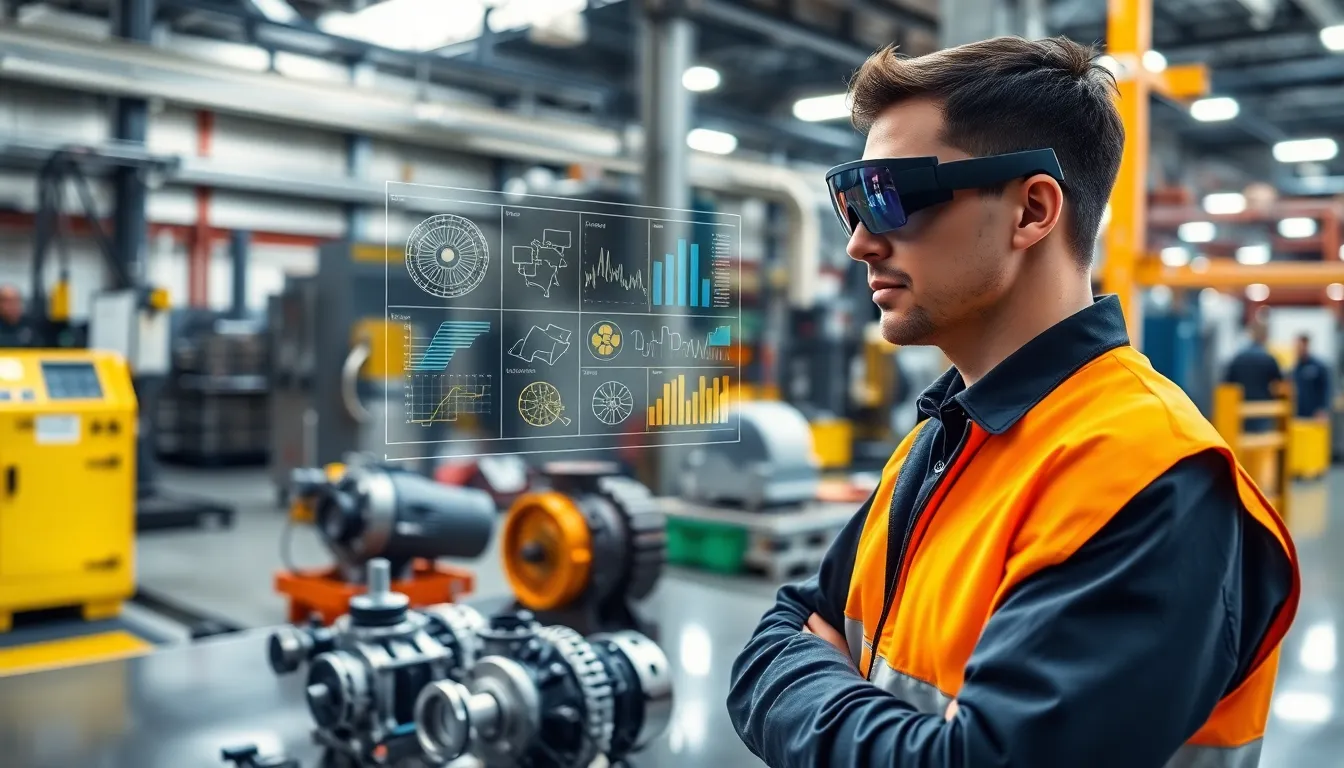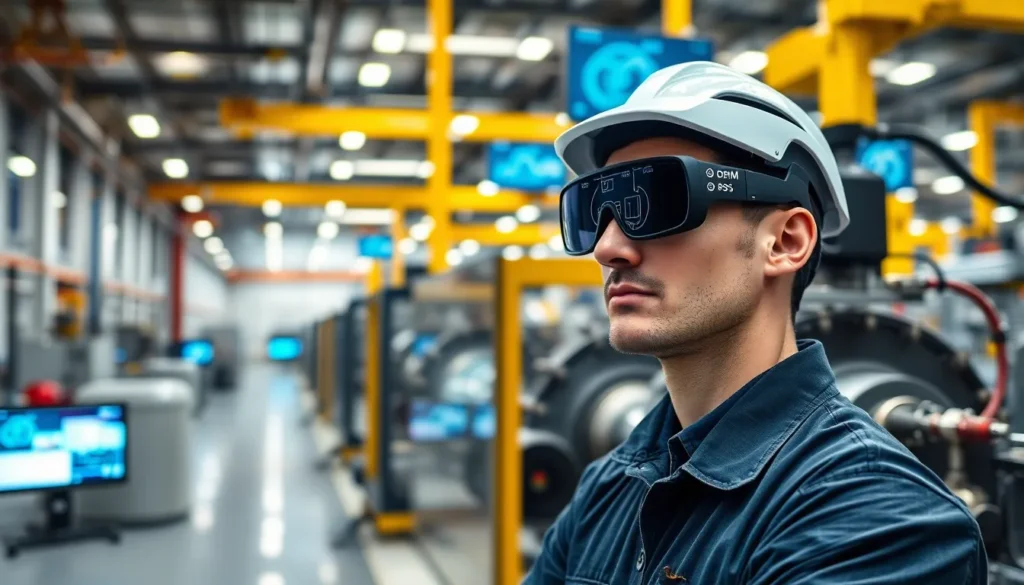Table of Contents
ToggleImagine stepping onto a factory floor where machines communicate with you, guiding your every move. Welcome to the world of Industrial Augmented Reality (AR), where reality and technology blend seamlessly. The implementation of AR in industrial settings is like evolving from black-and-white to color TV: once you experience it, there’s no going back. This article dives into the dynamic realm of industrial augmented reality, exploring its definition, applications, and how it’s revolutionizing industries one hologram at a time.
What Is Industrial Augmented Reality?

Industrial augmented reality refers to the integration of digital information with the physical environment in industrial settings. Unlike virtual reality, which immerses users in a completely digital world, augmented reality enhances the real world by overlaying valuable information, graphics, and animations. Imagine a technician wearing AR glasses that display step-by-step assembly instructions right above the components they are working on. This technology leverages computer-generated imagery to present real-time data, fostering enhanced decision-making and increased efficiency.
At its core, industrial AR aims to improve operational processes, boost productivity, and reduce human error. By utilizing AR, workers can visualize complex machinery and systems, leading to greater accuracy and efficiency in tasks. Whether it’s for maintenance, training, or design, industrial augmented reality provides a richer context to everyday operations.
Applications of Industrial Augmented Reality
The applications of industrial augmented reality are broad and transformative. Here are a few key sectors where AR is making waves:
Manufacturing
In the manufacturing domain, AR acts as a virtual guide for assembly lines. Workers equipped with AR headsets can view graphics showing exactly where each component fits. This not only speeds up the assembly process but also minimizes mistakes, eventually leading to cost savings.
Maintenance and Repair
Consider a scenario where an engineer can see an overlay of critical components while diagnosing equipment issues. AR helps technicians visualize internal structures and locate defects faster, significantly reducing downtime during repairs. By displaying detailed instructions, workers can execute repairs accurately the first time.
Training
Training new employees becomes a breeze with augmented reality. Rather than leafing through manuals or watching lengthy instructional videos, trainees can engage with interactive, 3D models in real-time. This immersive experience aids skill retention and builds confidence.
Logistics
In warehouse management, AR can optimize storage and picking. Workers can receive real-time directions to find inventory quickly, enhancing efficiency and reducing the likelihood of human error in order processing.
Benefits of Implementing Augmented Reality in Industries
The rise of industrial augmented reality brings a myriad of benefits, each more enticing than the last. Let’s explore some of them:
Enhanced Productivity
By providing real-time information and guidance, AR minimizes the time spent searching for resources or waiting for instructions. A study noted that productivity could rise by up to 30% with AR tools. Imagine how much more work can be accomplished in a day.
Improved Safety
AR can be a game-changer in enhancing workplace safety. By overlaying critical safety information, hazard warnings, and best practices directly in the engineer’s field of view, it’s easier for them to take precautions. The technology helps identify potential risks before they become problems.
Cost Reduction
By boosting efficiency and reducing error rates, AR helps mitigate operational costs. The investment in AR technology often pays off quickly when mistakes are fewer, and training times are shorter. Also, instances of equipment downtime due to employee error are significantly reduced.
Better Design and Prototyping
In design industries, augmented reality can aid engineers and designers in visualizing products in real-time. This results in better prototype iterations and quicker turnarounds, from conceptualization to production.
Challenges and Limitations
Even though its promising advantages, industrial augmented reality also faces certain hurdles.
High Initial Costs
Integrating AR solutions can be expensive. The initial investment, which includes hardware, software, and training expenses, may deter some organizations from adopting the technology. But, the long-term benefits often outweigh these initial costs.
Technical Skills Gap
The successful implementation of AR requires a workforce that is skilled in both using AR technology and understanding how it applies to their specific tasks. Organizations need to invest in training for employees to maximize the potential of AR systems.
Data Security Concerns
With the integration of AR, sensitive operational data is at risk. Organizations need to prioritize cybersecurity measures to protect their data, especially when using cloud-based AR solutions. If security drawbacks aren’t addressed, they could deter companies from utilizing this technology.
Future Trends in Industrial Augmented Reality
Looking ahead, several trends signal how industrial augmented reality will continue to develop and evolve.
Advancements in Hardware
With ongoing improvements in AR hardware, devices are becoming more affordable and user-friendly. Lightweight headsets with longer battery life, as well as smartphones that support AR applications, are on the rise.
Integration with AI
The fusion of artificial intelligence with AR will enhance automation, allowing systems to learn from user interactions and improve over time. This symbiotic relationship can lead to smarter, more efficient applications that predict user needs.
Immersive Experiences
Gamification elements within AR applications can enhance user engagement during training and maintenance. Making work enjoyable can lead to greater adoption rates and improved skill retention.
Expansion Across Industries
While manufacturing and maintenance have been early adopters of AR, other sectors such as healthcare, education, and retail are beginning to recognize the value of AR. This cross-industry expansion will drive innovation and more diverse applications.




